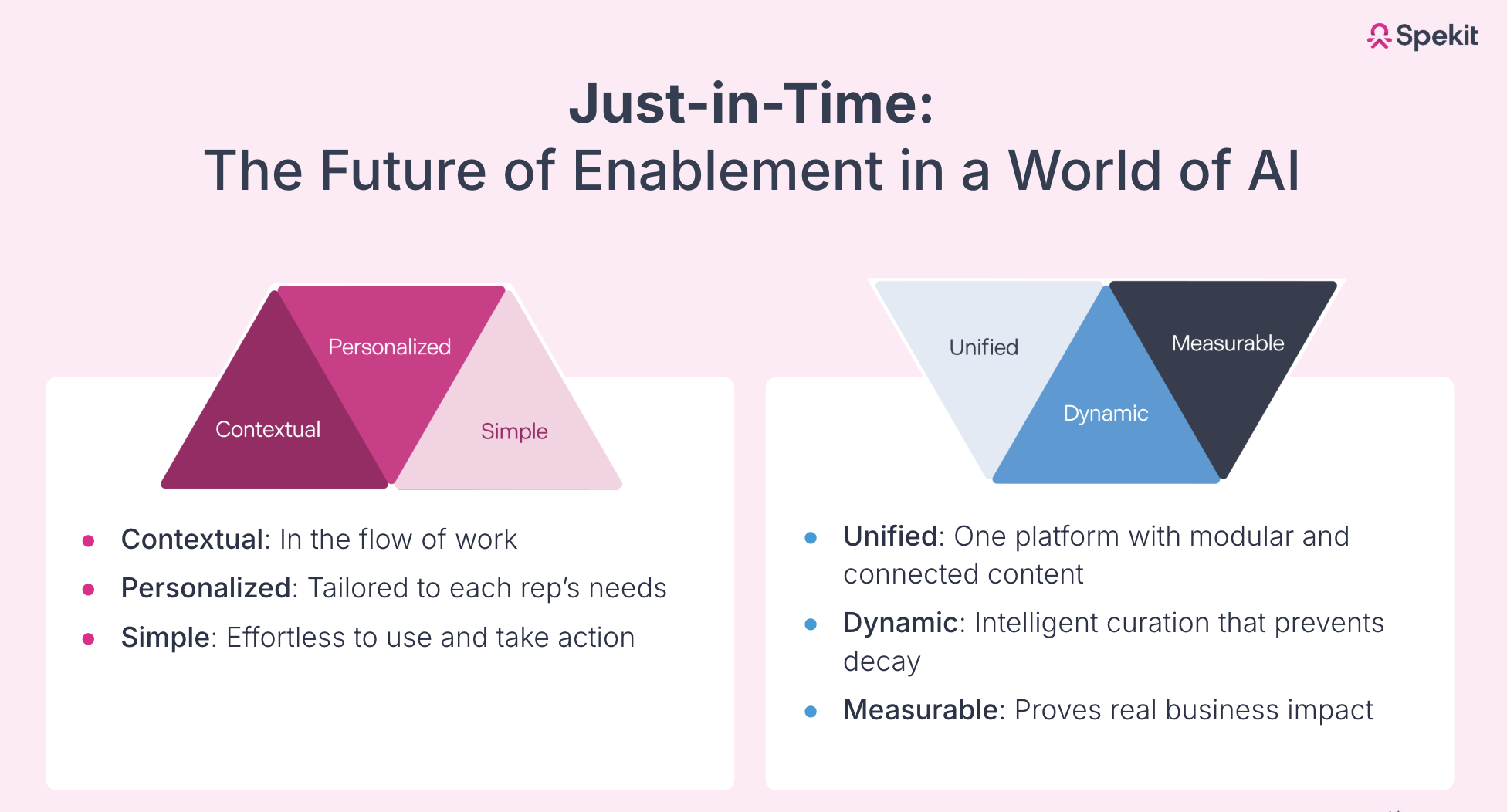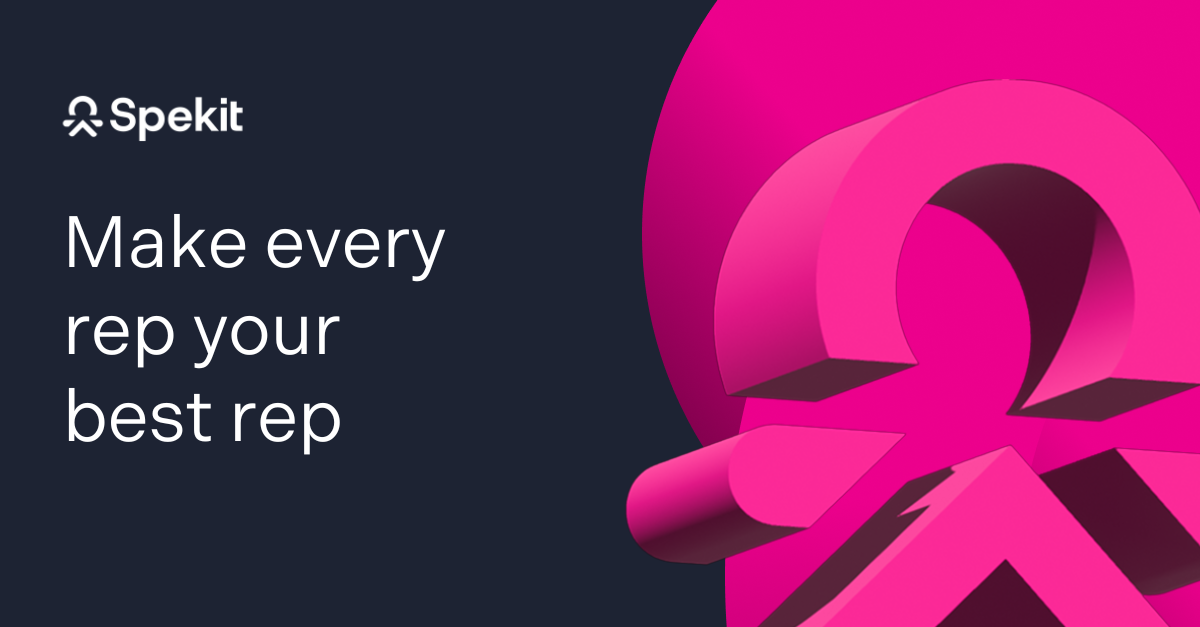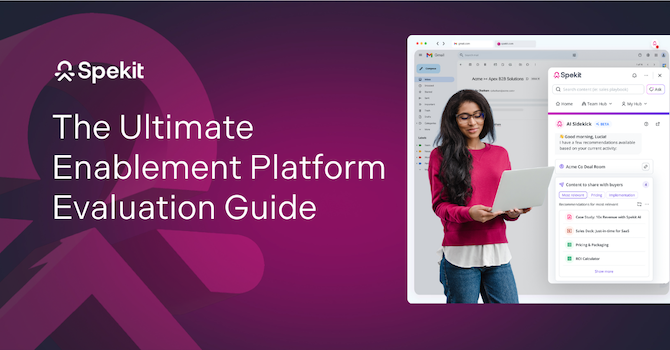“When you think about something and don't really know much about it, you will automatically get information.” Larry Page, Co-founder, Google.
In the world of corporate training, many trends have come and gone. Continuous sales training helped, but trainers and managers still struggled to counteract the forgetting curve — the rapid rate at which employees forget information right after learning it.
Today, just-in-time learning (JIT) helps employees avoid information overload, access knowledge when they need it, and put what they’re learning into practice immediately. It’s the key to overcoming the forgetting curve and empowering employees to control how and when they access knowledge.
Read on to learn what just-in-time learning is, why it matters, and how it’s evolved into something bigger: just-in-time enablement — the next chapter in how modern teams learn, adapt, and sell.
What is just-in-time learning?
Just-in-time learning is a training approach that gives employees access to the right knowledge at the right time. Instead of relying on classroom sessions or bulky LMS modules, it delivers information at the point of friction — the moment an employee might make a mistake or need clarity.
It embeds knowledge directly into workflows so employees can find answers without disrupting their flow of work.
Why just-in-time learning matters
Traditional learning assumes people can pause work, absorb everything, and recall it later. But real life doesn’t work like that. People learn best in the context of doing. That’s why the best modern companies use JIT learning to improve:
Technology adoption
Platforms like Salesforce or HubSpot evolve constantly. JIT learning uses in-app guidance and micro-coaching to keep reps current without overwhelming them.
Worker autonomy
By surfacing knowledge in context, employees self-serve answers and build confidence.
Change management
In today’s change economy, change is constant. JIT learning enables instant updates on processes, products, or pricing — so teams can adapt faster.
Knowledge retention
Research shows people forget 50% of what they learn within an hour. JIT learning combats this through small, frequent reinforcements that keep information top of mind.
From just-in-time learning to just-in-time enablement
When Melanie Fellay co-founded Spekit, she wasn’t just thinking about learning — she was thinking about execution.
“It’s not enough to know what to do,” she writes in Just-in-Time: The Future of Enablement in a World of AI. “Enablement’s real job is to help people do it — faster, smarter, and in the flow of work.”
Just-in-time enablement is the evolution of learning. It merges knowledge, content, and real-time execution into a unified system that delivers everything a revenue team needs — exactly when they need it.
It’s the difference between a static training manual and a live, AI-powered co-pilot that works alongside you.

Why the evolution matters
The way we work has changed.
Sales cycles are faster. Tech stacks are bigger. Buyers expect personalization, not generic follow-ups. Meanwhile, reps are switching between 10+ tools a day and losing nearly 4 hours a week to context-switching.
The old model of enablement — one-time training, scattered content, disconnected systems — can’t keep up.
Just-in-time enablement fixes that by embedding enablement where execution happens. It unifies:
- Learning → what to do
- Enablement → how to do it
- AI → when and where to act
This approach turns enablement into an active system, one that doesn’t wait to be used but anticipates needs.

The pillars of just-in-time enablement
1. In the flow of work
In the book, Melanie describes this as “the frictionless layer between knowing and doing.” When guidance lives inside the tools reps already use, adoption stops being a battle.
With Spekit:
- Reps see the right answer in-app, not buried in a PDF.
- Managers measure what content actually drives deals.
- Everyone moves faster because context never breaks.
2. Everboarding replaces onboarding
You can’t expect someone to remember everything from week one. The future is continuous enablement — reinforcement in small, timely bursts.
With Playlists, teams replace “one-and-done” onboarding with guided, dynamic learning paths that evolve with the business.
“Learning shouldn’t be an event,” Melanie writes. “It should be a rhythm.”
3. AI in the moment of need
The next era of enablement isn’t about teaching faster, it’s about anticipating need.
AI Sidekick, Spekit’s just-in-time assistant™, does exactly that:
- Recommends deal-specific content where reps are selling
- Answers questions proactively
- Drafts buyer-ready emails instantly
- Surfaces insights directly in Salesforce, Outlook, or Slack
This is the kind of enablement that sells even when you’re not in the room.

4. Reinforcement through action
From the book: “We don’t learn by listening. We learn by doing, failing, and trying again with better guidance.”
That’s why Deal Rooms and AI-powered content recommendations matter. They tie learning directly to live deals, allowing reps to apply what they know immediately and see results.
5. Proof through data
Enablement is only as strong as the impact it proves.
Revenue Insights connects content, coaching, and buyer engagement directly to pipeline movement and closed-won deals. It’s no longer about usage metrics — it’s about outcomes.
“Enablement leaders shouldn’t measure attendance,” Melanie writes. “They should measure adoption and impact.”
What it looks like in practice
- Introhive just-in-time enablement to reduce ramp time by 75%.
- ZoomInfo uses just-in-time enablement to unlock millions in pipeline and rapidly roll out changes.
- InMoment saw 90% faster content access after implementing Spekit's just-in-time enablement.
Each company started small — mapping moments of friction — then used Spekit to bring answers directly into the flow of work.
The future is just-in-time enablement
Just-in-time learning changed how people absorb information.
Just-in-time enablement changes how people perform.
It’s the bridge between knowledge and execution — powered by AI, embedded in the flow of work, and proven by data.
Spekit is the modern enablement platform built for the AI era.
Come see what real enablement looks like.
Book a demo to learn more!







